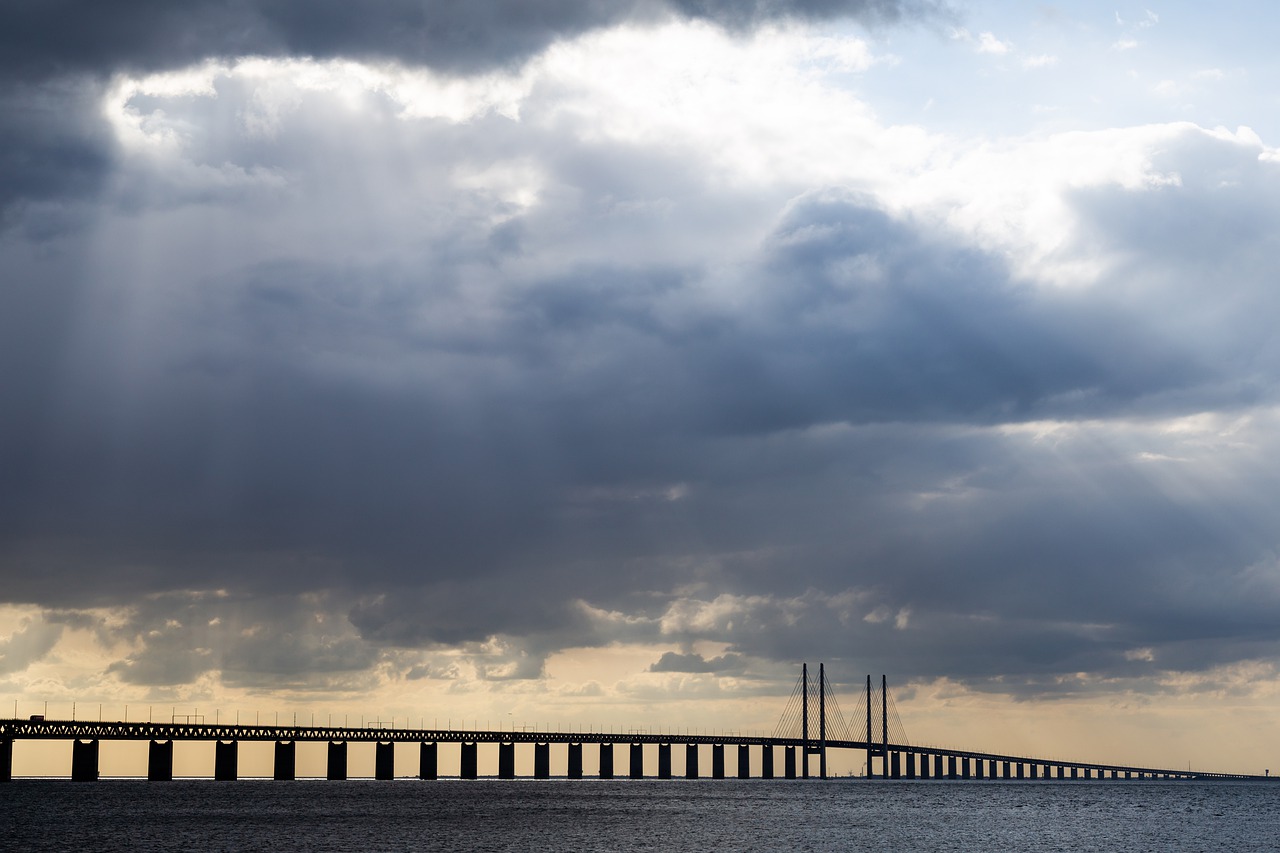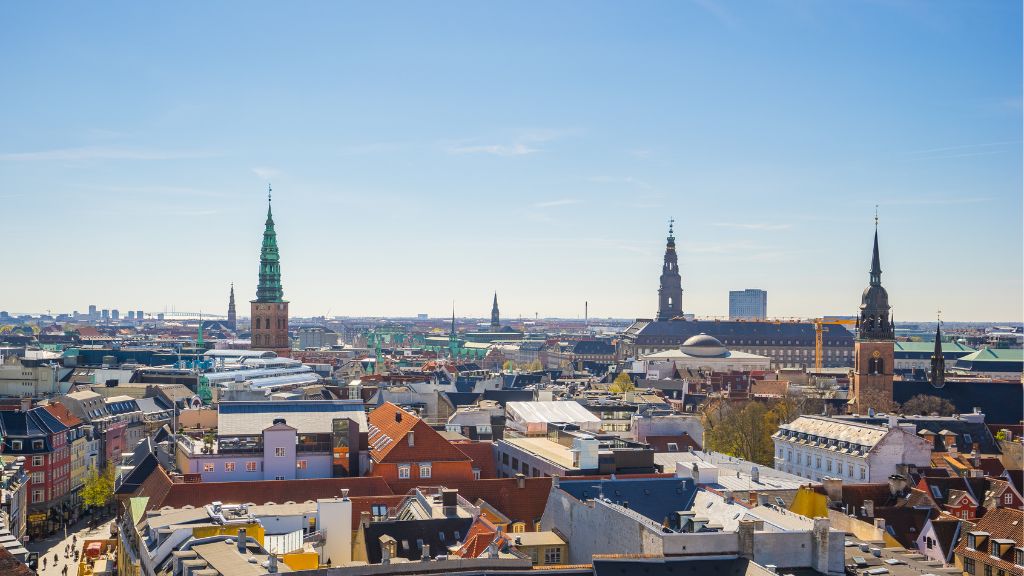
The Øresund bridge
The Øresund Bridge (Øresundsbroen), which opened up for traffic in July 2000 is unique since it connects two countries,Denmark and Sweden.
For more than a houndred years the two countries planned a fixed link between Malmø and Copenhagen but one obstacle after another graveled the plans, until now. The bridge is a combined bridge and tunnel and one of the largest constructions in Europe with its 8 kilometre bridge, 4 kilometres artificially made island, called Pepparholmen, and a 4 kilometres long tunnel.
The Øresund Region is one of today's most important and dynamic areas in Europe in terms of growth and environment. There are roughly 3.5 million people living within a radius of about 100 km.
You can cross the bridge by car or take the Øresund-train to the former Danish town Malmø. You will be there in less than 20 minutes!
Ørestad
The new means of transport like Øresund Bridge and the city metro system has expanded the city area, so now Ørestad, the new planned city district, is becoming the centre of the whole Øresund Region.
Ørestad is a new conurbation, still growing a few kilometres south of the City borders, not far from the Copenhagen Airport.
The Ørestad planning consists of six different districts in a conurbation. A University Campus and the biggest mall in Denmark are already there. The Ørestad Down Town area is also designed - by one of the best: Daniel Libeskind.
A vital part of the Øresund Region
Ørestad gives Copenhagen the possibility to grow and develop, without jeopardising the integrity of the old city. This approx. 600 metres wide strip of land is already an attractive part of the city. With businesses, pleasure and leisure, smart housing and the university campus, Ørestad will in the years to come become the natural centre of the whole Øresund Region. When Ørestad is finished, it will give home to 20,000 people. 20,000 will study there, and 60,000 people will come to work in the area.
Nature and surroundings
Copenhagen and surrounding areas has a fantastic variation of nature with sandy beaches, (total 8 km long), lovely beech forests, and cultivated land with immense fields in yellow, green and red colours, depending on what season you visit the area.
With public transportations you have no problems discovering and experiencing Copenhagen green areas, and the countryside with its lovely nature.
For those then who wish to spend some time close to the nature, a walk in the romantic 17th century Dyrehavsbakken (a royal deer park) just north of the city, will be a joy.
Ledreborg palace & park, and one of the mayor attractions in Denmark - Lejre Experimental Centre, which is an open-air theme park with reconstructed ancient living environment, are situated near Roskilde, 20-30 minutes travel from Copenhagen´s centrum. A ca 35 minutes long trip along the coast to Louisiana Modern Art museum will also give chance to relaxation, since the museum is situated in a beautiful old park.
Be creative and enjoy Copenhagen ad-lib!
Denmark - basic facts
Kingdom of Denmark
Area: 43,093 km²
Population: 5,511 millions
Population density: 126.4/km² (327.8/sq mi)
Language: Danish
Capital: 509,8; urban area: 1,167,569; Copenhagen Metropolitan Area: 1,834,492 (2010)
Other big cities: Århus, Odense, and Aalborg
Natural assets: Oil, fossil fuel (gas), limestone, clay, gravel
Other languages understood/spoken: English by most people, German and French are also widely spoken
Religion: Protestantism
Constitution: Monarchy
National holiday: 5th of June (Fredrik VII signing "Danmark Riges Grundlov 1849")
Membership in international organisations: The Arctic Council, the European Council, UN, NATO, EU, OECD, OSSE, the Nordic Council, WTO, The Baltic Sea Council and many others.
Gross Domesti Product: GDP per capita: DKK 1.658 billion /USD 310.1 billion (2009) 300.241 DKK /USD 56, 790 (2009)
Human Development Index (HDI): 0.866 (very high; ranked 19th)
The Danish Flag: Probably from the 13th century. Established in 1397. Red with a white cross. It's called Dannebrogen and one of the world's oldest ensign.
Time zone: CET (UTC+1), daytime saving time (DST) is observed.
Currency: Danish krone (DKK)













